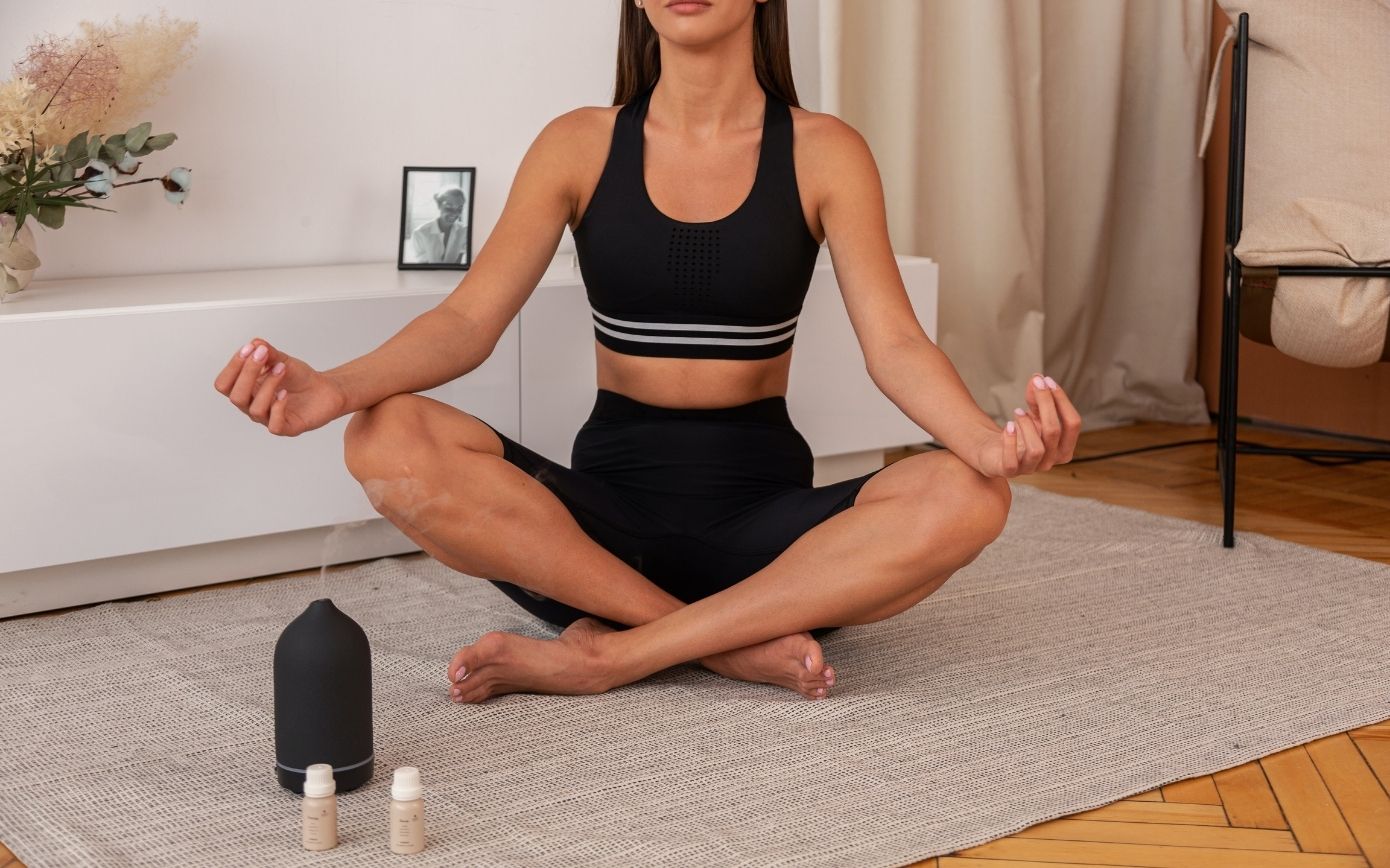It’s possible to carve out a slice of calm in your home – no matter how small your space is …
If one of your new year’s resolutions was to try to incorporate some mindfulness or wellness into your daily life, whether to help soothe stress and anxiety or to help you be more present in your day to day, meditation is a good place to start. Meditation is a wellness trend which, although has become more popular in recent years, is a centuries-old practice which helps to reduce stress levels and lower blood pressure, and can help to still the busy thoughts that tend to race through our minds.
While it’s possible to meditate anywhere (and that’s one of the benefits of this practice) setting out a designated space in your home, no matter how small, can help you to clear your mind and keep focused on the task at hand. And there are some important elements that will help you to find a routine and switch off, whether you have five or fifty minutes to spend meditating.
Creating a space in your home that is totally devoted to banishing stressful emotions is easier than you might think. Your meditation practice can be improved by implementing thoughtful design decisions to make your space as zen as possible. And if you meditate in the same space each time it can help your mind to switch off quicker as after a while you will automatically associate that space with meditation. Kate O’Shaughnessy, yoga teacher and creator of meditation podcast, Suaimhneas, says: “Your mediation space should ideally make you feel calm, relaxed and grounded. Set it up to promote tranquility. By setting up your space with these emotions in mind, you can promote a sense of inner peace and better deal with the days when you may not feel that way.”
If you are new to meditation, you might wish to seek out a spot in your home where you feel comfortable, as far away from any potential distractions as possible – like televisions, screens, doorbells and alarms – so that you can switch off in peace. “It’s personal preference when it comes to technology. I love using guided meditations and music, so that means my phone, headphones and speaker are with me in my space. But if you’re using your phone for a guided meditation, always make sure to pop it on ‘Do Not Disturb’ mode for undisrupted zen time!” says Kate.
Keep this space uncluttered and try to utilise natural light where possible. If you have the option, it’s always a good idea to have your meditation space close to a window or skylight so that you can feel the warmth of the sun on your skin on good days, and embrace the sounds of nature when it’s windy or raining – you might even get lucky with some birdsong to help you switch off! If the room is naturally quite dark, add a soft lamp or two to illuminate the space without the overpowering glare of an overhead light.
LESS IS MORE
When it comes to creating a meditation space, often less is more. Use soft, soothing colours like white and beige, and if you want to introduce some colour opt for earthy tones and pastel hues. You can then bring in some natural elements like bamboo, rattan, wood, sheepskin throws and even some greenery. It’s important to make your meditation space comfortable and somewhere you can truly relax and switch off, so start with a small seat, stool or floor cushion. Add a warm throw and keep some cosy socks close by. Lay a rug or yoga mat out on the floor. Many people like to add an essential oil diffuser, incense, sage or Palo Santo, a Himalayan salt lamp or calming candles which you can burn while you meditate. Choose soothing scents like lavender, ylang ylang or vetiver to fill your space.
Kate notes that some people like to begin or finish their meditation practice by journaling, so keep a notebook and pen in the area so you can jot down any thoughts that might be dizzying your mind. “I always encourage journaling either before or after meditation (this is personal preference, so try both and decide which works for you). Before is a nice way to settle your mind; asking yourself how you feel, what you’re grateful for, maybe setting an intention. And journaling after is the perfect way to reflect and process anything that came up during; jotting down your emotions and noting some of your prominent thoughts.” You might like to keep a wicker basket close by to store items like blankets and cushions and notebooks if your meditation space is within a living area and needs to be packed up when not in use.
Now that you have created your meditation space, it’s time to start your practice. Consistency is also important, so in the beginning try to aim for even five minutes every other day, to really reap the benefits. “Don’t worry if some days are harder than others, that’s totally normal; consistency over perfection!” says Kate. Happy meditating!
LOVETHEGLOSS.IE?
Sign up to our MAILING LIST now for a roundup of the latest fashion, beauty, interiors and entertaining news from THE GLOSS MAGAZINE’s daily dispatches.






